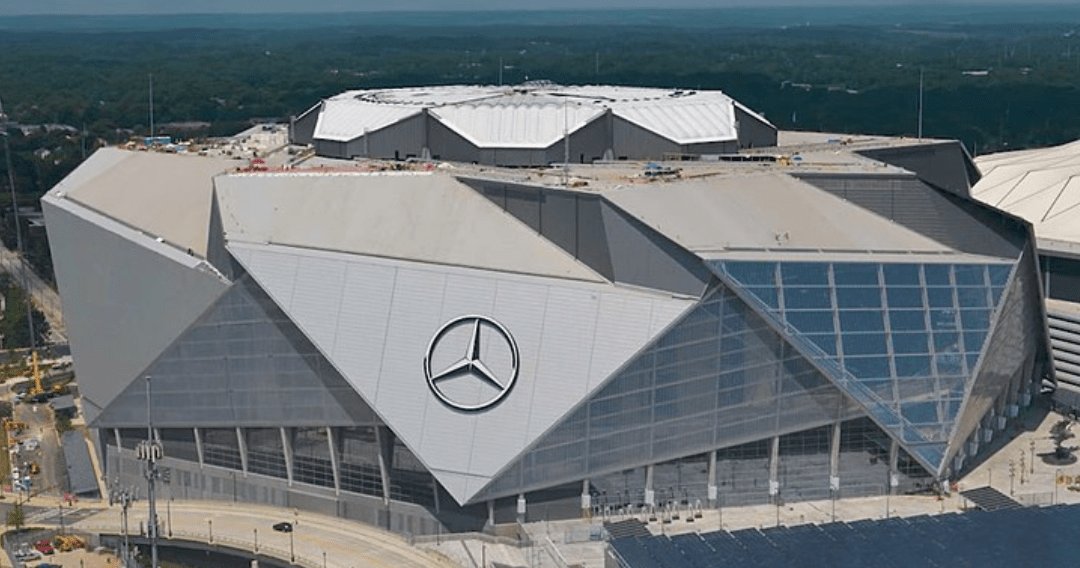We used to say that cash is king — but how long before that loses its relevancy?
2019 saw the beginning of a new era in fan experience at sports and live entertainment venues. It starts with the elimination of cash transactions as much as possible, or in some cases, altogether. The rise of cash-free payment shouldn’t come as a surprise. After all, cash is extremely inefficient, and not to mention over half of Americans are no longer carrying cash. Coupled with the improvement in WiFi connectivity at an increasing number of venues, taking a stadium cashless is no longer just a slogan.
We’d like to highlight a few stadiums that have made cashless operations a reality in the past year, and discuss what that means to venues of all types and sizes in 2020.
1. Mercedes-Benz Stadium
As the first pro stadium to implement cashless operations in North America, MBS certainly made a big splash in the news this past year. Once you enter the gates, cash is pretty much useless. The payment for all food, beverages and merchandise needs to be with credit cards, debit cards or mobile payment services such as Apple Pay. The policy also will be in effect at Falcons games and, at least for food and beverages, all other stadium events.
Although, if you are desperate and only have cash, there are ten cash-to-card kiosks around the stadium. Guests will be able to feed the cash into the machine and obtain a pre-paid debit card with the same amount with no transaction fee.
According to Steve Cannon, CEO of Falcons and Atlanta United parent company AMB Group, which operates the stadium, the move to cashless is intended to speed transactions and shorten waits at concession stands and merchandise shops. Although MBS has ranked No. 1 in speed of service across all NFL venues two years in a row, the stadium is unafraid to invest heavily into taking that fan experience even further.
2. Tropicana Field
While MBS was the first to actually implement cashless operations, Major League Baseball’s Tampa Bay Rays was in fact the first major U.S. sports franchise to announce its stadium to be cash-free. However, since the soccer season opens before the baseball season, MBS beat the Rays to the game.
Before going cashless, the ballpark conducted several pilot programs and trials done last year.
With the new cashless concept, fans will move at least 20 to 35 percent faster. With faster lines, fans can get back to their seats quicker to enjoy the game, according to Bill Walsh, VP of Strategy and Development.
There are five ways fans can pay for food, drinks and merchandise. Fans can use their major credit cards, Apple Pay, Samsung Pay, the Rays card or gift cards. Fans without electronic payment can exchange their cash for gift cards at retail locations or through roaming gift card vendors.
3. The Utah Jazz’s Vivint Smart Home Arena
Before the start of the 2019-2020 NBA season, the Utah Jazz’s Vivint Smart Home Arena became the latest venue to transition to a cash-free environment for food and beverage purchases. Certain areas around the arena’s main and upper concourses will only accept credit, debit, and prepaid cards and mobile payments during events.
The process was so smooth that people were switching lines and visiting the cash-free ones, said Senior Vice President of Communications Frank Zang. With 70% of transactions already taking place either by phone or card, all food and beverage transactions at Vivint Smart Home Arena will be cash-free by the spring of 2020. Other local businesses in the city like the Megaplex movie theaters and the Salt Lake Bees, the Triple-A affiliate of the Los Angeles Angels, are joining the Jazz in the cashless movement.
4. Barclays Center (Partially Cashless)
Home to the Brooklyn Nets and the Islanders, Barclays has stopped accepting cash at most of its 28 concession stands and eateries without making huge announcements to the press in 2019, according to lawmakers who have talked with the stadium about the move.
Barclays says eliminating cash leads to shorter, faster lines and less theft. Cash transactions take 50 percent more time to process than card transactions, according to the arena in their statement.
5. T-Mobile Park (Partially Cashless)
T-Mobile Park piloted cash-free transactions at select concession locations around the ballpark ahead of their season in 2-10, while the Mariners are also making mobile entry available to all fans as part of a drive to make the gameday experience fully digital.
Before determining whether a fully cashless operation would be he future model, the Mariners would first evaluate customer wait times and transaction speed at the end of the season. According to MLB.com, over half of all MLB teams have already transitioned to mobile-only ticket entry or are doing so this season.
What should we expect to see in 2020?
The cashless train is not slowing down in any way, and we’ve definitely seen the swing towards cashless stadiums since 2018. Even just cashless retail in general — more and more stores and restaurants are saying they’re moving to a completely “cashless” experience. The fact is, the mass adoption of easy-to-access card payment devices, apps and mobile wallets have trained customers to expect the convenience of digital payment wherever they are. Stadiums and live event venues are not an exception.
Despite the industry talking about the trend for nearly a decade, we’re still not at a point where the majority of retailers and stadiums have embraced cashless payment systems. We are not even halfway there yet. Moving to cashless-ness in stadiums will need more than a technological change — we will also need a culture change, in which stadiums feel confident in offering cashless solutions and fans stop thinking of sports game as a “traditional” activity inherited from the past.
In today’s on-demand economy, the blossoming of tech solutions is only heralding a new era to come. Be it Uber, DoorDash or Instacart…examples of how people are not content with waiting abound. Granted, there are growing pains with the beginning of any technological revolution (think back to how people feared that human body wasn’t made to travel at incredible speeds of 30 miles per hour when train was invented, or how rumors spread that we’d all go blind with the prevalence of televisions), and there are sure to be complaints about a cashless experience leaving behind people who don’t have bank accounts or credit cards. However, it’s been proven time and again that such hesitations are by no means the reason for stopping a change that’s bound to happen.
And we believe going cashless is the next frontier to shake up the fan experience in sports and live entertainment industry. In 2020, you’ll see.
To see a full demo and other capabilities on FanFood, fill out the form below to get in touch with our team!

